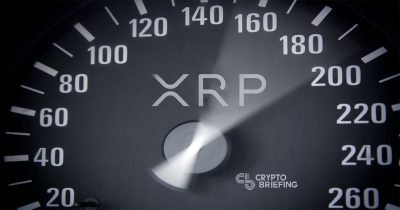Should XRP Holders Worry About Token Velocity?

Share this article
Many crypto traders believe in a simple logic: as demand for a digital asset rises, so does its value. Whenever there is a bullish signal, like a new use-case or partnership, the price rises due to the increase in demand.
Take XRP for example. Ripple’s founders designed XRP for financial institutions, as the value transfer in its xRapid settlements solution. xRapid adoption should, according to this belief, raise the price of XRP. As a case in point, when the National Bank of Kuwait announced plans to begin using xRapid, the XRP market cap increased by a billion dollars.
But this trend may be about to change.
What is Token velocity?
Velocity is the rate at which a currency is spent. The more a currency changes hands, by being spent or exchanged, the higher its velocity. In conventional monetary economics, this leads to an increase in the price of goods and services, otherwise known as inflation.
This leads to the conclusion that as an asset’s velocity increases, its market value drops.
This conclusion applies to XRP as well as fiat currencies. If the token is adopted for settlements, rather than speculation, it will be exchanged more frequently. As XRP changes hands more frequently, token velocity will increase, leading to inflation. Against the dollar (or any other currency), XRP’s value would drop, dampening any price increases due to adoption.
Few banks that have adopted the XRP settlements solution actually hold XRP. They view it as a vehicle of exchange, not a store of value. “Either the banks hold XRP or they don’t. If the banks hold XRP, that adds to demand,” David Schwartz, Ripple’s CTO, explained on Twitter. “If the banks don’t, then they rely on market makers who hold XRP.”
Euro Exim Bank, which announced it would begin using xRapid this year, relies on BitPay to exchange fiat currencies for XRP, as Fortune reports. The bank expects to have its own exchange up and running as early as this year.
Few details are available, but if the bank is still changing XRP for a fiat currency, with an external counter-party, velocity will likely increase. This could drive up inflation and push the market price of XRP down.
Economist predicts lower XRP price
Emiliano Pagnotta, assistant professor of finance at Imperial College London, has closely studied cryptocurrency price dynamics, particularly XRP. In an email to Crypto Briefing, he predicted that increased velocity would have a negative effect on the XRP price. “Higher velocity means higher price levels, that is, higher goods and services prices. Equivalently, [a]…lower XRP price,” he wrote.
Pagnotta emphasises that this is still uncharted territory. XRP is not a fiat currency and may not behave in the same way. A fixed supply, for example, could create a ceiling for inflation.
But velocity is still something to worry about, depending on how long users hold on to XRP. “If they hold tokens for extended periods, and only use it for payments now and then, they could be reducing velocity,” Pagnotta explained. On the other hand, if banks and market makers use the same XRP tokens, again and again, velocity will increase.
This isn’t a design flaw, and low prices are unlikely to affect XRP’s financial usefulness. If prices fall, banks will simply use more XRP for settlements. Because they operate in fiat currencies, and xRapid transactions happen so quickly, a declining XRP price is unlikely to hinder bank adoption.
But XRP holders may not be so elated if banks begin to use xRapid regularly. After all, it could cause the value of their own holdings to decrease.
The author is invested in digital assets, but none mentioned in this article.
Share this article
